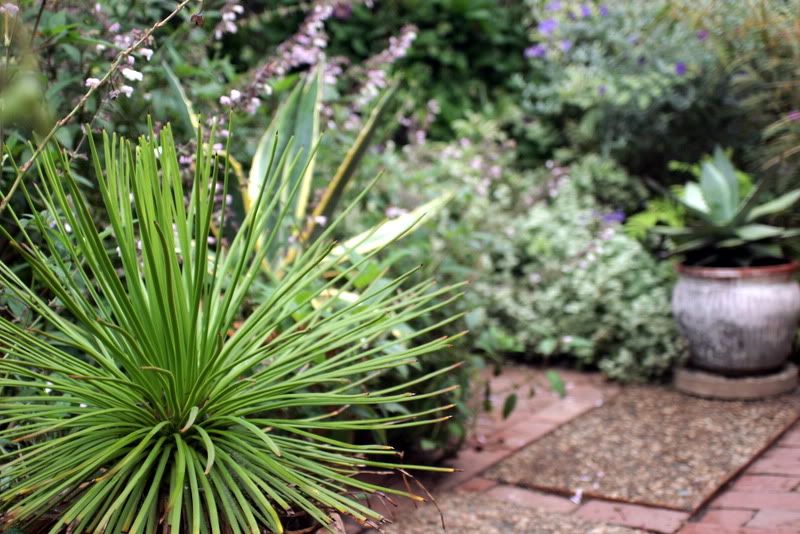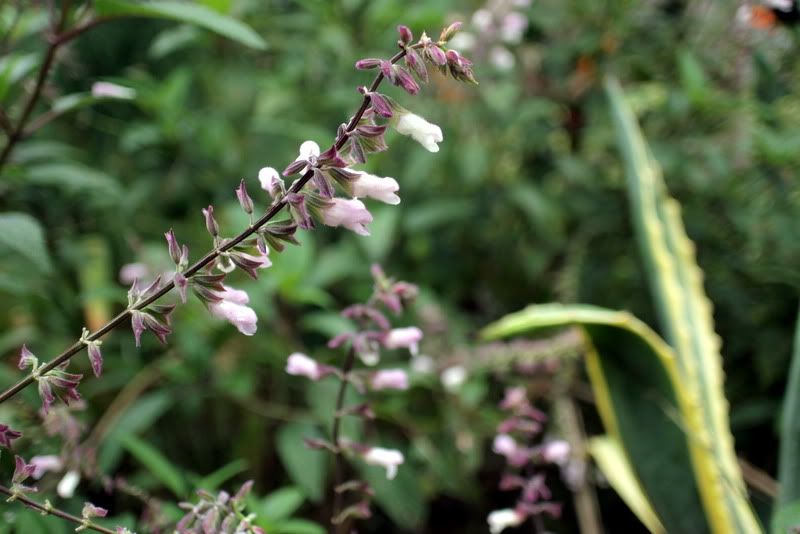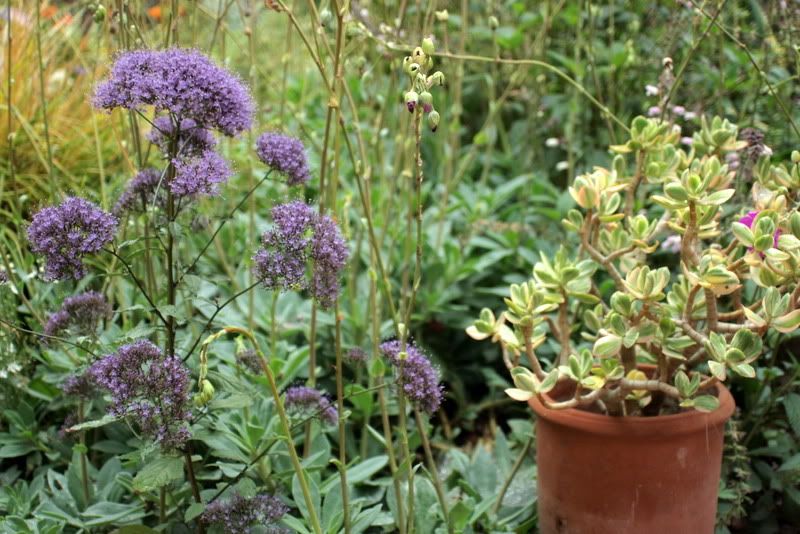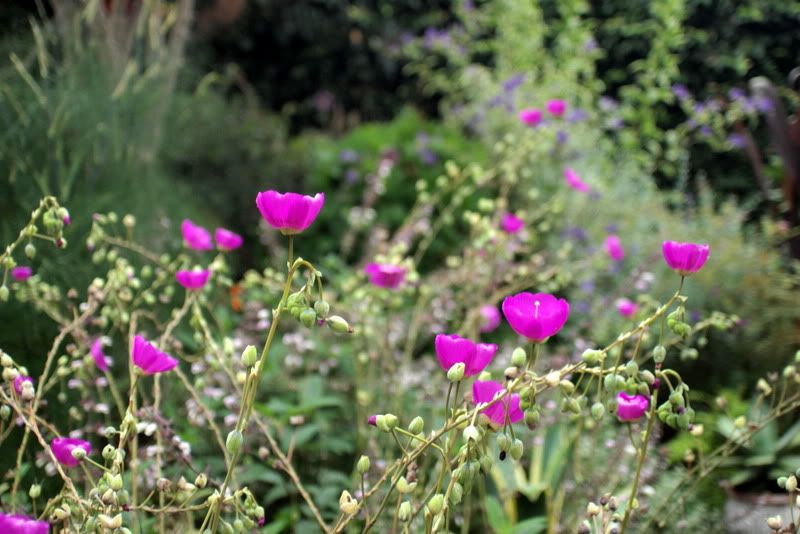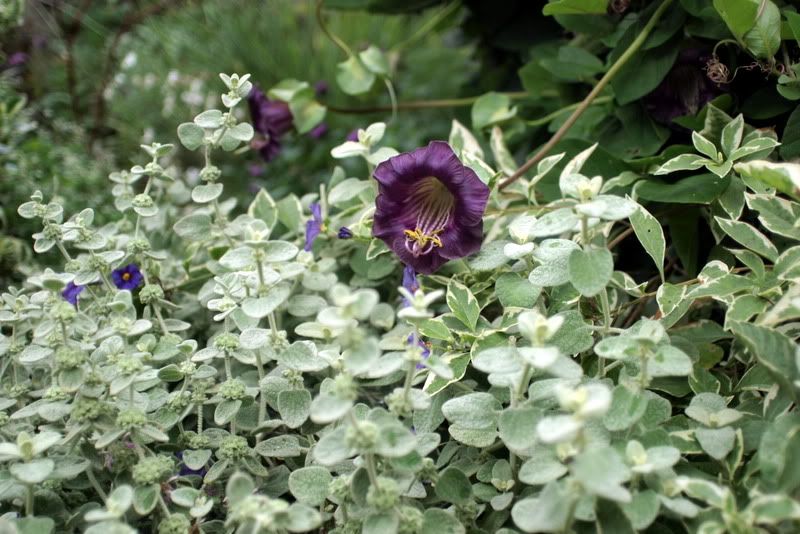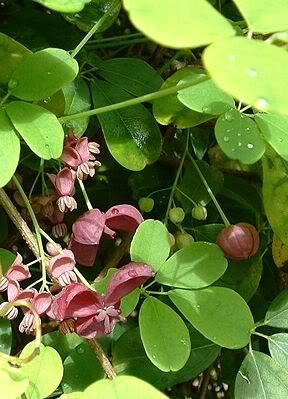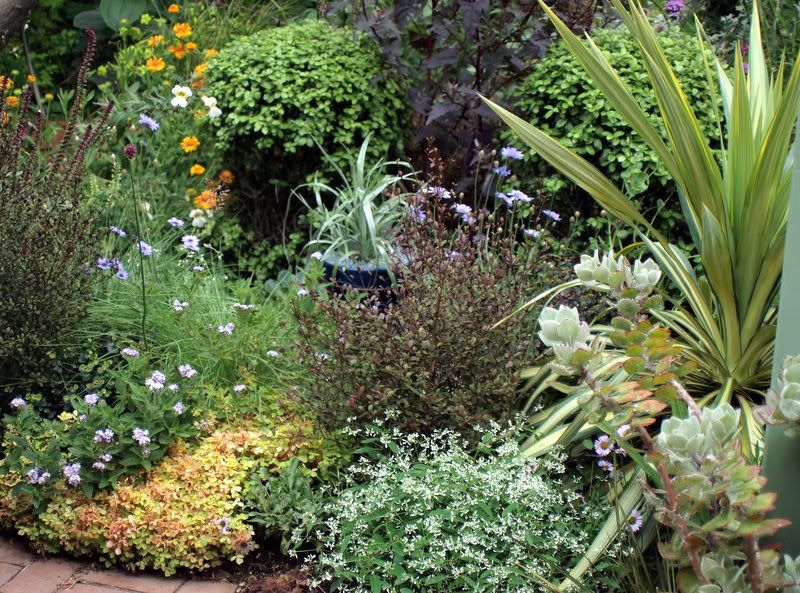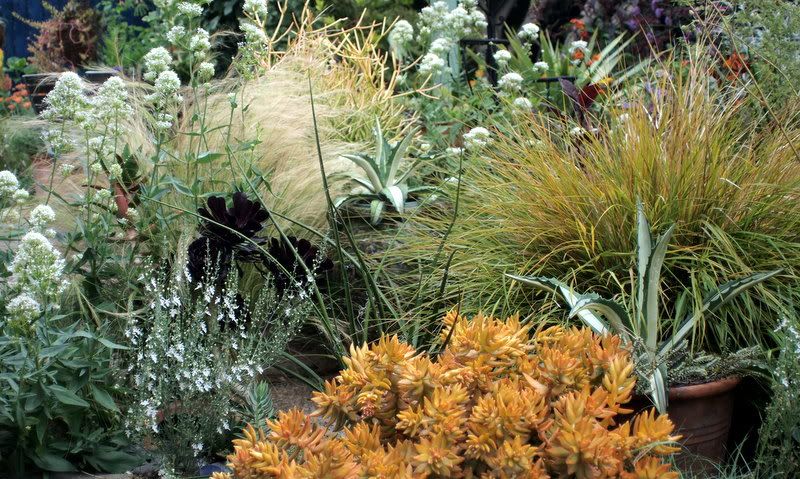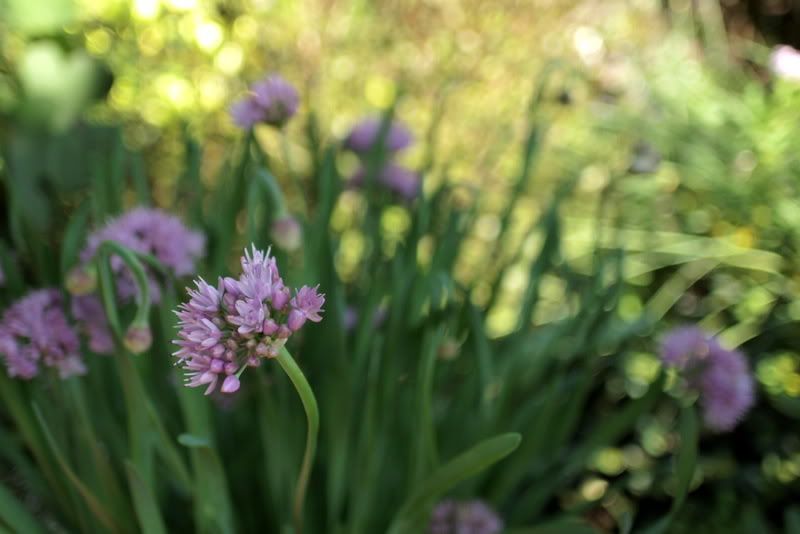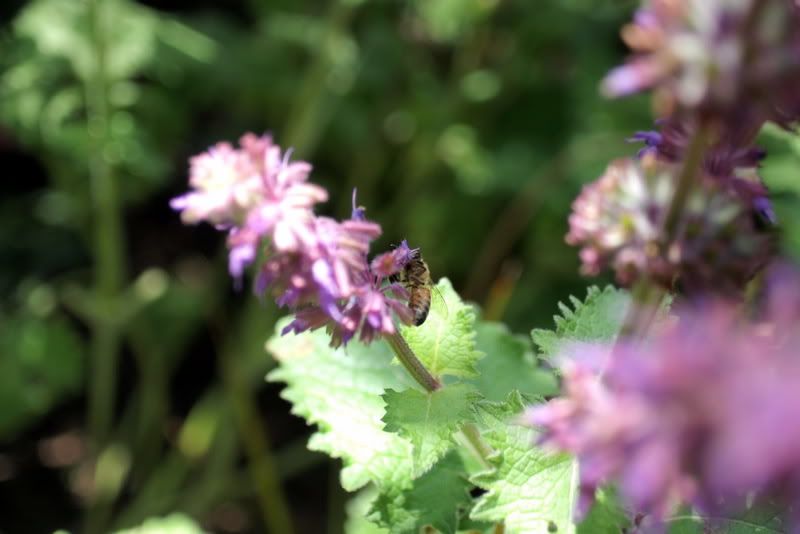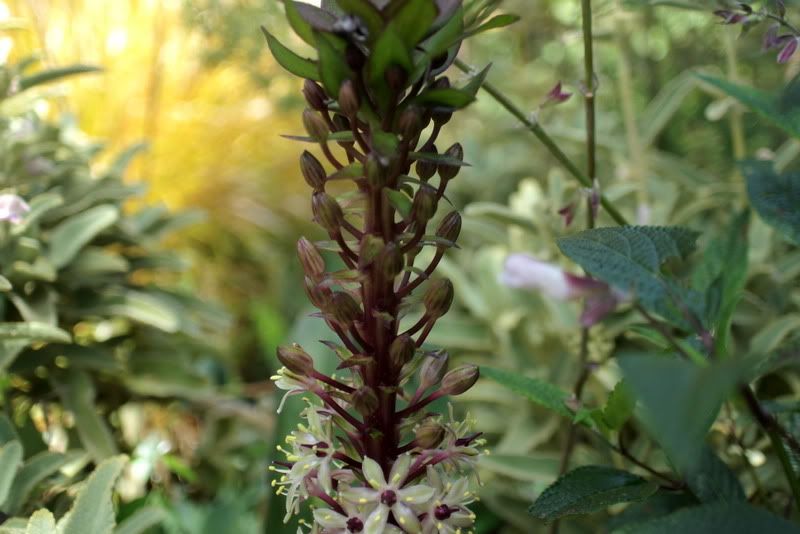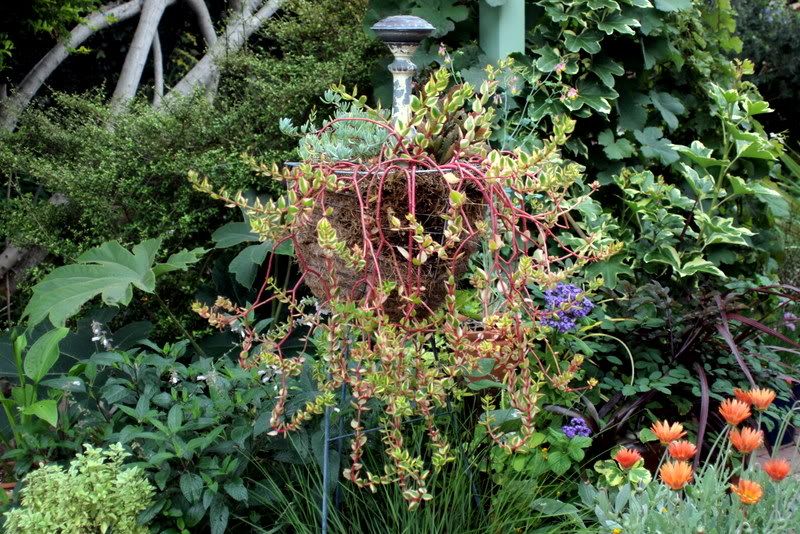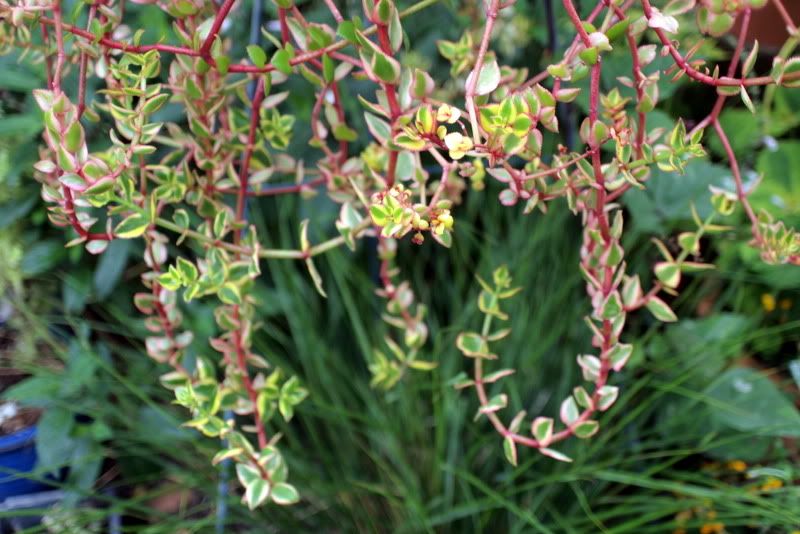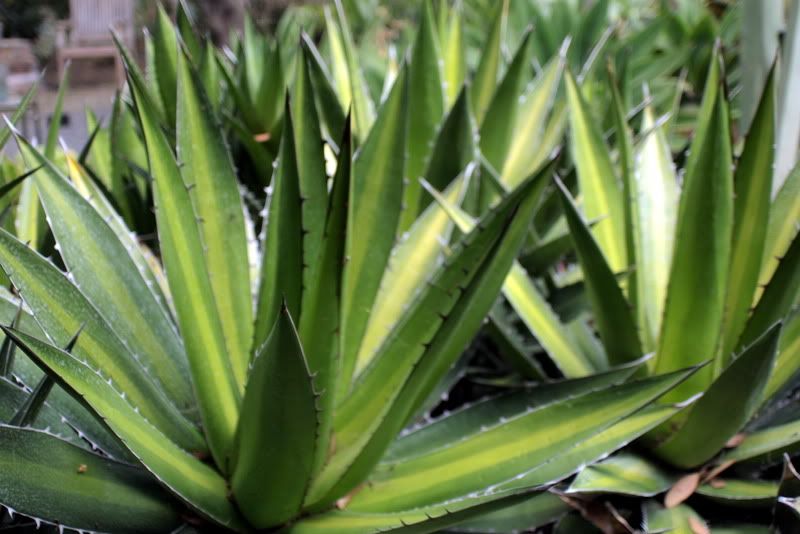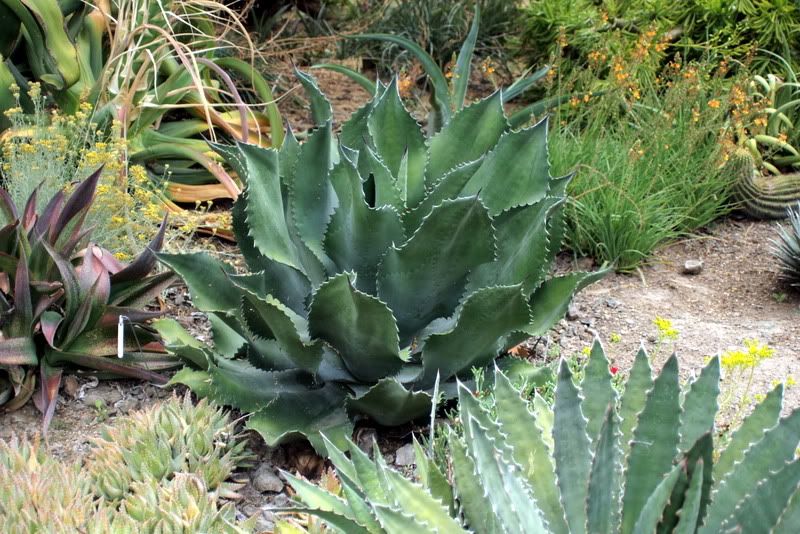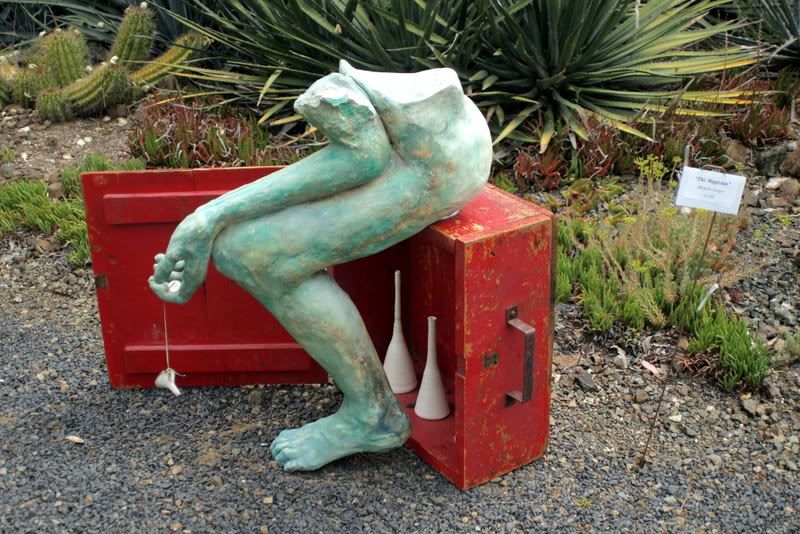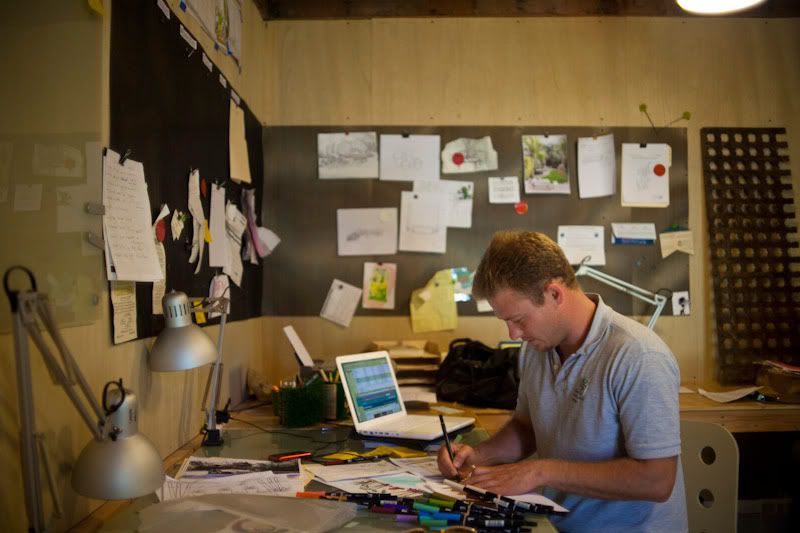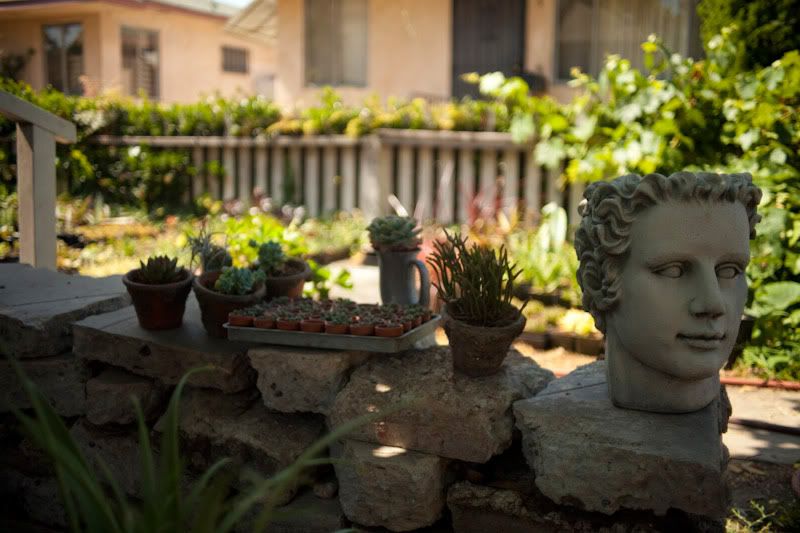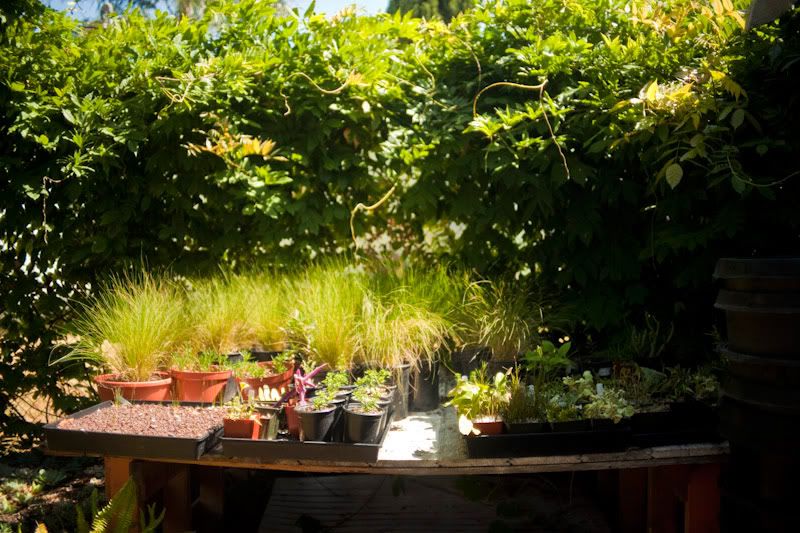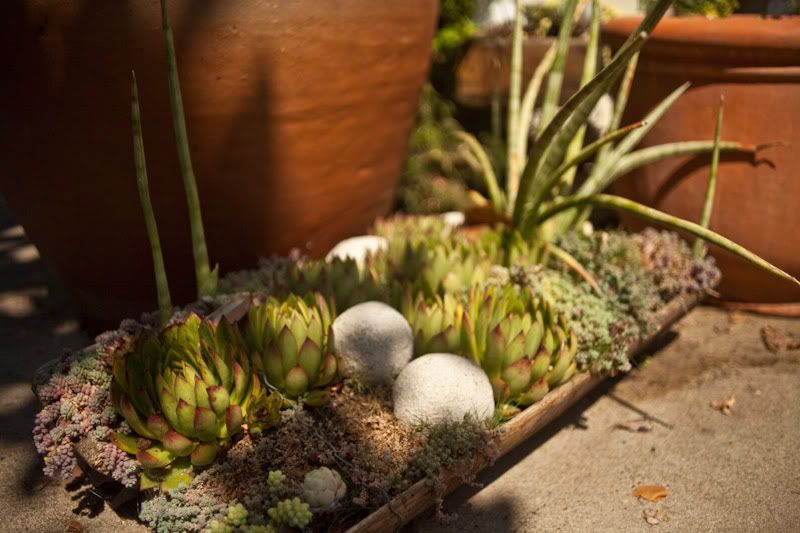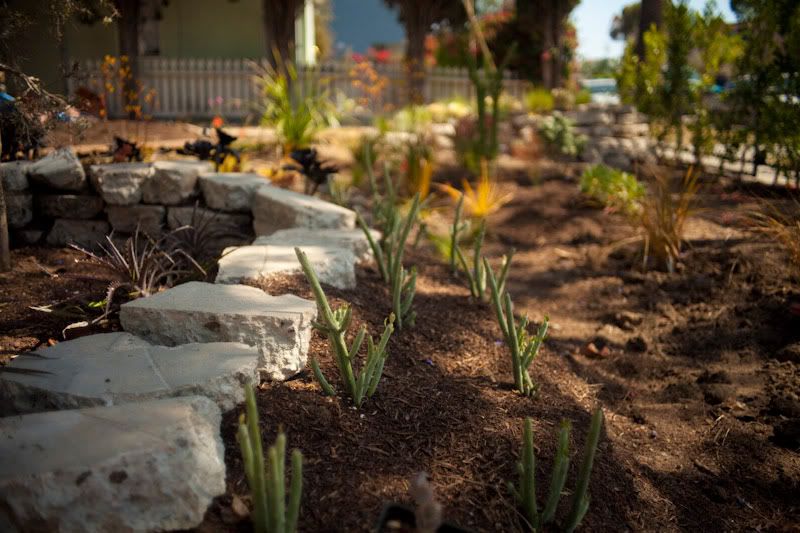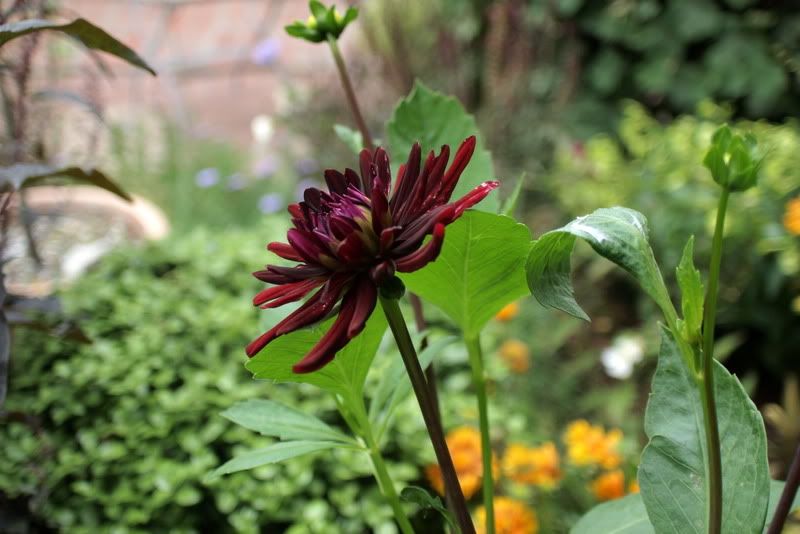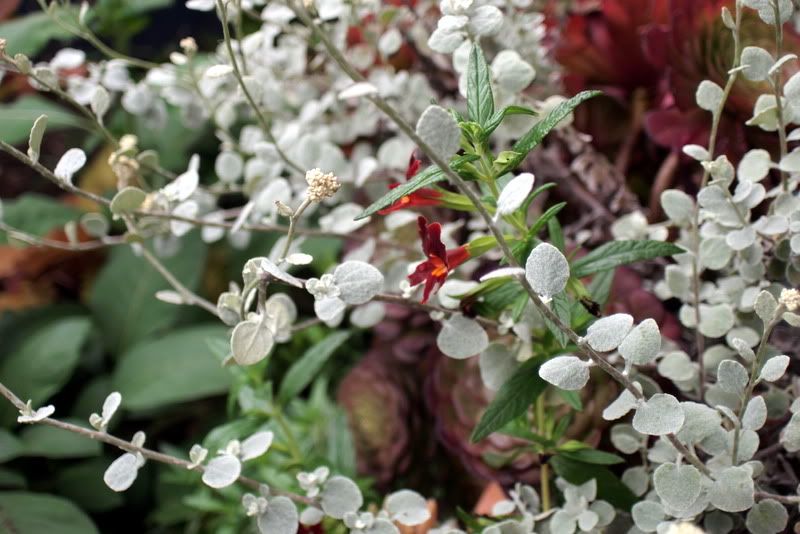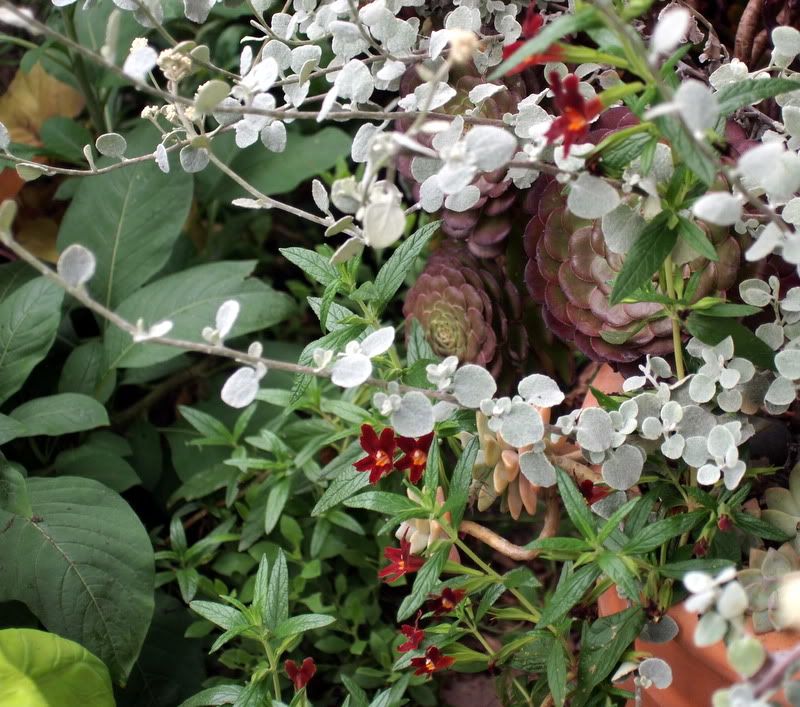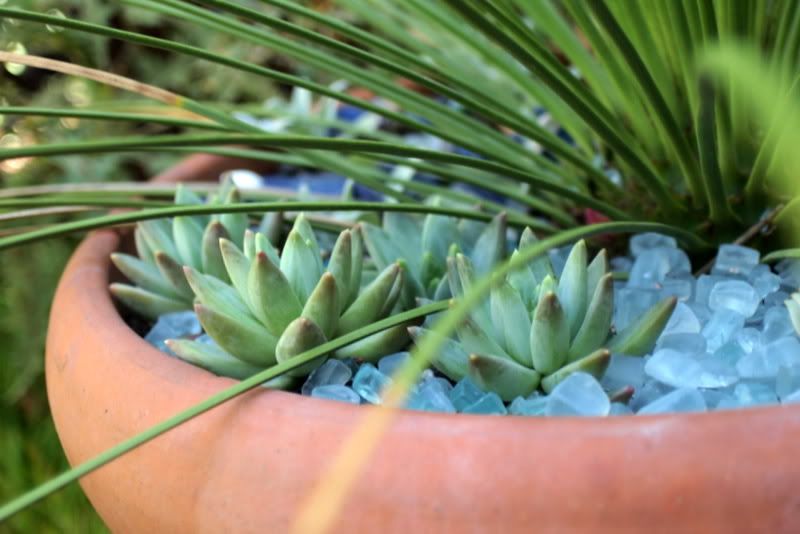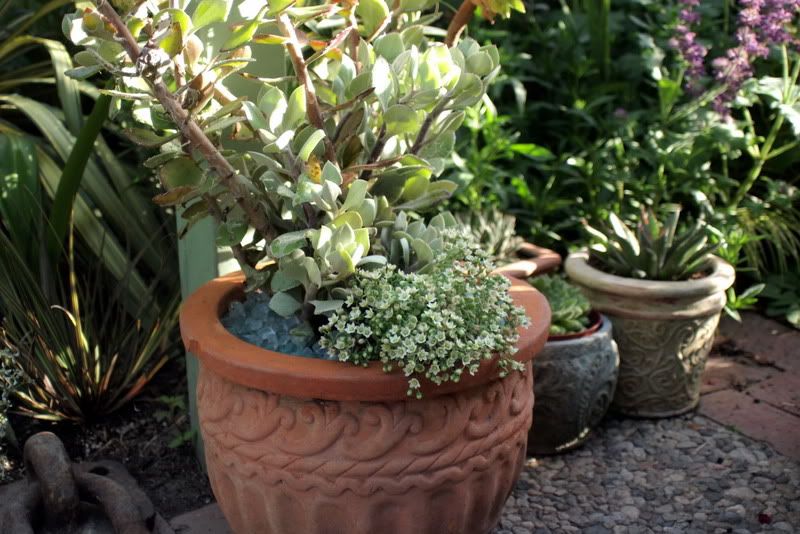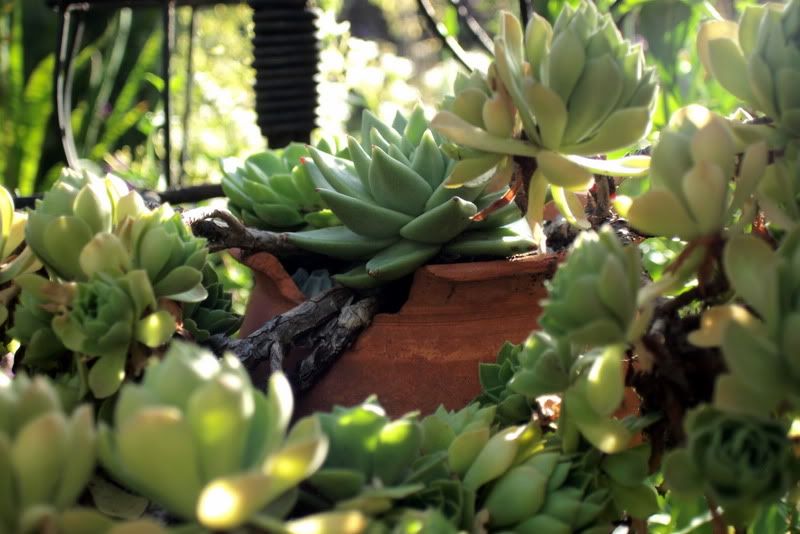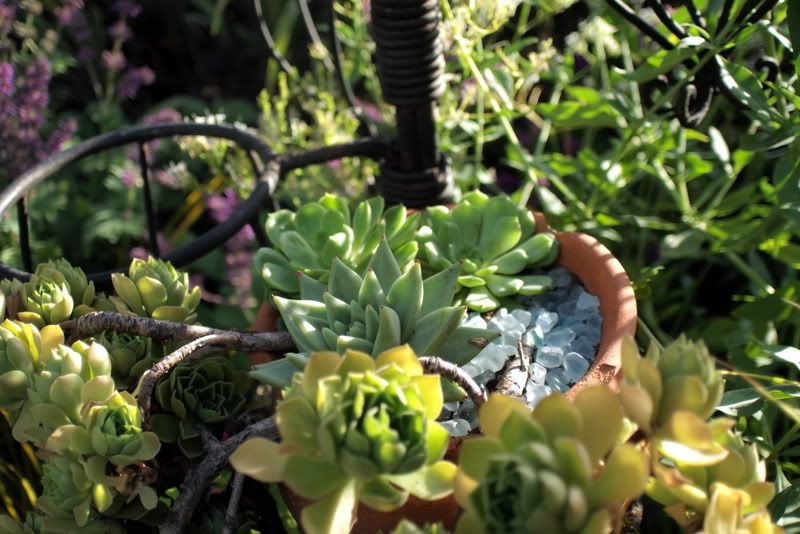As I’ve written before, this little walkway is often under siege by sprawlers (or gloriously festooned with plant life, depending on your point of view).
When half the path disappears under plants, even I know it’s time to do some cutting back. Agave geminiflora stands tall in a pot, safe from being inundated.
After the mid-summer cutback, the agaves remind me of stranded starfish once the plants recede.
The ‘Waverly’ salvia was cut back by at least half. Still plenty of salvia left for the hummers though. This will probably be the salvia’s last year in this spot, since it’s grown excessively woody and needs to be started again from cuttings. The two large pebble pavers were completely buried by it.
I long ago read that the ‘Waverly’ salvia was a spontaneous hybrid of S. leucantha and S. chiapensis. I repeated this on a forum, and Richard Dufresne, salvia expert extraordinaire, queried where I had heard this. Of course, I had no memory of where I’d heard this, and it was purely unsupported, anecdotal information. Sometimes being an amateur vs. an expert has its perks. You get to shrug instead of sweat the details.
Interesting about plant nomenclature. It’s usually no more than a nuisance keeping up with changing names, but occasionally it does impact even the home gardener. A few years back I thought I’d try the dwarf Salvia leucantha, the variety ‘Santa Barbara,’ and ordered it from the wonderful Northern California nursery Digging Dog. They sent the ‘Waverly’ salvia, which I hadn’t grown in years due to the massive size it reaches. I was amazed that this estimable nursery made such an error, but soon after realized it was a result of their being up-to-the-minute on nomenclature, a problem of too much information. They immediately straightened out the order. As the San Marcos link indicates, two salvias were simultaneously known at that moment in time as Salvia ‘Santa Barbara,’ the dwarf leucantha and this salvia I’ve always known as ‘Waverly.’ The ‘Waverly’ in my garden are descendants from that mishap. And the true identity of the ‘Waverly’ salvia still remains a mystery. Growing the mystery salvia formerly known as ‘Waverly’ at the edge of a border rather than mid-border nicely handles its size and sprawl issues. Much better it sprawls on bricks than neighboring plants.
Leaving the thorny thickets of botanical nomenclature and back to the now wide expanses of the agave walk, relatively speaking. Trachelium caeruleum has seeded into the dry-laid bricks.
Caladrinia spectabilis still waving long wands of magenta poppies. Long may it wave.
Back near the potted Agave parryi, Cobaea scandens leans a bloom on Ballota acetabulosa, which is also in bloom, though almost imperceptibly.
See the little bobbles? Another first-rate sprawler but one of my favorite plants.

